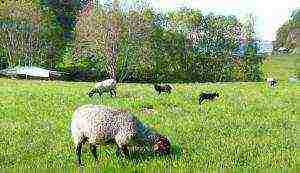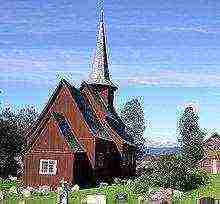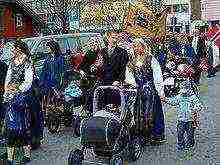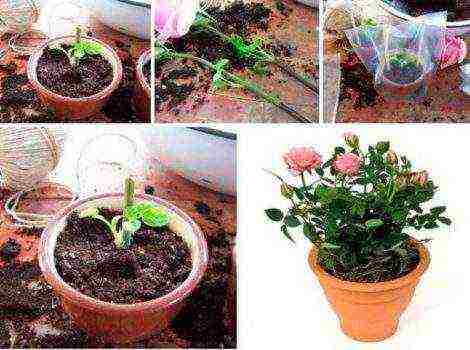Content
Category: Norway
As in other Scandinavian countries, in Norway the share of agriculture in the economy has decreased due to the development of the manufacturing industry. Agriculture and forestry employ 5.2% of the country's working-age population, and these industries provided only 2.2% of total production. The natural conditions of Norway - a high latitude position and a short growing season, marginal soils, abundant rainfall and cool summers - greatly complicate the development of agriculture. As a result, mainly fodder crops are grown and dairy products are of great importance. Every fourth Norwegian family cultivates their own plot of land.
Farming in Norway is a marginal sector of the economy, in an extremely difficult situation, despite the subsidies provided to support peasant farms in remote areas and expand the country's food supply from domestic resources. The country has to import most of the food it consumes. Many farmers produce enough agricultural products only to meet family needs. Additional income is provided by working in fisheries or forestry.
The seasonal movement of livestock, in particular sheep, to mountain pastures ceased after the Second World War. Mountain pastures and temporary settlements, which were used for only a few weeks in the summer, are no longer needed, as the collection of forage crops in the fields around the permanent settlements has increased.
 In agriculture
In agriculture
Norway employs 140 thousand people, which is 7% of the total employed. The share of agricultural production in the country's gross national product approached 2%, significantly behind industry. The basis of Norwegian agriculture is animal husbandry. Difficult climatic and special soil conditions, mountainous terrain make it difficult to grow crops.
Farms are generally small. Only a third of farmers have an area of more than 10 hectares. agricultural land, and an area of 50 hectares. - Only 1%. Although the level of mechanization of agricultural work is high, there is a lack of labor in the countryside and therefore most of the work is carried out by family contracts. The general increase in agricultural production is provided not by additional employment, but by an increase in the level of labor mechanization, the introduction of modern technologies, etc.
Livestock breeding forms the basis of rural production. The country has 1.0 million. Heads of cattle, 800 thousand. Pigs, 2.3 million. Sheep. Dairy and beef cattle breeding prevails in the southern part of the country. Sheep breeding is developed in the mountainous regions of central Norway, and reindeer breeding in northern Norway. Livestock mainly provides the country with the necessary food products (meat - dairy products). Some of the products, namely butter, milk, cheese, pork, beef, are exported.
Most of the land (over 70%) is unsuitable for agricultural and even forestry production. Basically, these are lands that occupy the territory north of the 62nd parallel. Only 5% of the territory is occupied by agricultural land. The main areas of agriculture are considered to be lowlands in the southern and middle parts of the country.The largest area under crops is in Ostlandeti (about 70% of arable land), in Trondelag - less than 15% and in Northern Norway - about 3%. The main crops are oats and barley. Rye and wheat are partially grown in the south. Vegetable growing (mainly in greenhouses) is developing around large cities. If animal husbandry can be considered self-sufficient, then Norway imports grain crops, in particular wheat.
IN
Fishing is well developed in Norway. The fish catch in the last decade was 2.5-2.8 million tons per year. By the number of fish per capita (648 kg.) And by the export of fish products, the country ranks second in the world.
Current version of the page so far
not checked
experienced participants and may differ significantly from
versions
Retrieved September 8, 2013; checks require
5 edits
.
Current version of the page so far
not checked
experienced participants and may differ significantly from
versions
Retrieved September 8, 2013; checks require
5 edits
.

Traditional Norwegian dance
halling
at the annual Pera Gynt Festival
Norwegian culture firmly linked to the history and geographic location of the country. The roots of Norse culture go back to the Viking tradition, the medieval "age of greatness" and the sagas. Although usually Norwegian cultural masters were influenced by Western European art and absorbed many of its styles and plots, traditional folk culture is nevertheless reflected in their work. The unique peasant culture, which has survived to this day, arose from the scarcity of natural resources due to the cold climate and mountainous landscape, but it was also largely influenced by medieval Scandinavian laws. Poverty, the struggle for independence, admiration for nature - all these motives are manifested in Norwegian music, literature and painting (including decorative). Nature still plays an important role in popular culture, as evidenced by the extraordinary passion of the Norwegians for sports and life in the bosom of nature. Heather (Norwegian røsslyng) is the national flower of Norway.
Overview
Influence of other cultures
Denmark and Sweden have had the greatest influence on the culture of Norway. In the Middle Ages, the culture of Germany with Lutheranism was of great importance, in the 18th century Germany was replaced by France, then in the 19th century Germany again took the leading position, and after World War II Norway began to focus on English-speaking countries. Over the past 30 years, the country has gone from ethnically homogeneous to multicultural thanks to the large number of blacks. Especially in the capital of Norway, Oslo, where about a quarter of the population are foreigners, a multicultural society is noticeable.
General principles
The culture of Norway is built on the principles of egalitarianism (equality of all people), any manifestation of elitism is strongly criticized by society. Norwegians are one of the most tolerant nations of the same sex relationship, Norway became the sixth country to allow same-sex marriage on its territory. Honesty and hard work are still valued among Norwegians. Environmentalism and animal welfare are also of great importance. Norway is considered one of the most developed and prosperous countries in the world with a low crime rate.
Kitchen

Norwegian cuisine is primarily driven by the cold Scandinavian climate and mountainous landscape, which make it difficult to grow crops and raise livestock. The main ingredients of Norwegian cuisine are fish, seafood, game, dairy products, including cheeses prepared in various ways. Due to high prices for wheat (almost all grain is imported from warmer countries), thin, tough cakes made from yeast-free dough are traditional bread.
Performing arts
Movie
Unlike neighboring Sweden and Denmark, which early established themselves among the international audience, the cinema of Norway began to develop only in the 1920s, starting with screen adaptations of literary works. The 1930s are considered the "golden age" of Norwegian cinema, when filmmakers began filming Norwegian nature and scenes from the life of the rural population. After World War II, during which films were subject to German censorship, a new generation of directors emerged whose films are classics of Norwegian cinema. In the 1950s, documentaries were very popular, and the 1970s spawned the insurgent, social-realistic genre of Norwegian cinema. In the 1980s, films began to be made with a more exciting, "Hollywood" storyline. In recent years, an increasing number of films filmed in Norway, including short films and documentaries, have become popular all over the world and have won awards at film festivals.
music and dancing
Norwegians do not forget the country's musical traditions, which developed from the traditions of the North German peoples and the culture of the Sami. Folk music and dances are still popular. Among the traditional chants, the yoik can be distinguished; the hardangerfele is considered a folk musical instrument. Traditional rural dances are still performed during holidays (weddings, funerals, religious holidays).
The musical culture of Norway began to develop actively only in the 1840s. The most prominent representative of the Norwegian classics is Edvard Grieg, followed by Sinding. In the early 1990s, Norway became famous as the birthplace of black metal. Currently, most of the bands known outside Norway produce metal and jazz music as well as electronic music.
art
Literature
The history of Norwegian literature begins with the Elder Edda songbook and skaldic poetry. Among the Old Scandinavian works, one should especially note the works of Snorri Sturluson, as well as the collection of folk tales and legends collected by Asbjørnsen and Mu in the 19th century. With the advent of Christianity, European medieval works have greatly influenced. From the 14th to the 19th century, Norwegian literature developed in conjunction with Danish.
In the 20th century, Norway presented the world with three Nobel Prize winners in literature: Björnstierne Björnson (1903), Knut Hamsun (1920), Sigrid Undset (1928). The most significant figure in Norwegian literature is Ibsen, with plays such as Peer Gynt, A Doll's House and A Woman from the Sea. Another Norwegian writer, Justein Gorder's novel, The World of Sophia, has been translated into 40 languages.
Architecture

The development of architecture in Norway reflects the development of the country's history. About a thousand years ago, small principalities in Norway were gathered into a single kingdom, which was then converted to Christianity. This was the beginning of the tradition of building from stone, the main example of which was the Nidaros Cathedral.
The tradition of wood construction is rooted in the distant past and is primarily due to the harsh Scandinavian climate and the easy availability of wood. The houses of the poor are traditionally built of wood. In the early Middle Ages, wooden stave were built throughout the country, one of which is listed as a World Heritage Site. Another example of wood construction is Bryggen Shipyard in Bergen.
The architectural styles popular in Europe rarely made it to the Scandinavian peninsula, but some of them still left their mark, such as the baroque church in Kongsberg or the wooden Rococo Damsgård mansion. After the dissolution of the Union with Denmark in 1814, Christiania (now Oslo) became the capital of the new state, where, under the leadership of Christian Grosch, the buildings of the University of Oslo, the Stock Exchange and many other buildings and churches were built.The 1930s, dominated by functionalism, were the heyday of Norwegian architecture. In recent decades, many Norwegian architects have achieved international recognition as well.
Painting and sculpture
For a long period of time, Norway adopted the traditions of painting from German and Dutch masters, as well as Danes. In the 19th century, the era of Norwegian art began, starting with portraits and continuing with expressive landscapes. Among the painters of Norway, Johan Dahl, Fritz Taulov and Kitty Keeland should be highlighted. One of the most famous painters in Norway is the representative of Expressionism Edvard Munch with the famous painting "The Scream". In addition, symbolism was popular among Norwegian craftsmen.
Gustav Vigeland is considered the national sculptor of Norway, who created a large number of sculptures reflecting human relations. The Vigeland Sculpture Park in Oslo contains over 200 sculptural groups that convey a specific set of emotions.
Holidays

Norway's main national holiday is Constitution Day, which is celebrated on 17 May. Festive processions and parades are held annually on this day.
Among the religious holidays, the most important is Christmas (Jul), the traditional character of which is Yulebukk, and Easter. Norwegians also celebrate the Nativity of John the Baptist (Jonsok), which coincides with the summer solstice (June 24). This day is the start of summer vacation and is usually met by lighting bonfires the night before. In the northern parts of the country, white nights are observed, while in the southern parts, the day lasts only 17.5 hours.
see also
- Cultural Foundation of Norway
- Wikimedia Commons has media related to Culture of Norway
Fishing is traditional in Norway, mainly in coastal waters, as well as forestry, agriculture and whaling. Of these types of economy, fishing is now the most important for Norway. Previously, fishermen went to sea in small boats, it was a family business. Now it has become one of the industries.
In recent decades, agriculture has given way to the dominant role of fishing. The main agricultural direction is dairy farming.
Forestry has become seasonal. From autumn to spring, peasants, busy in summer with work on the land, go to logging.
A moratorium has now been passed on whaling, but Norway has filed a protest and continues to fish.


